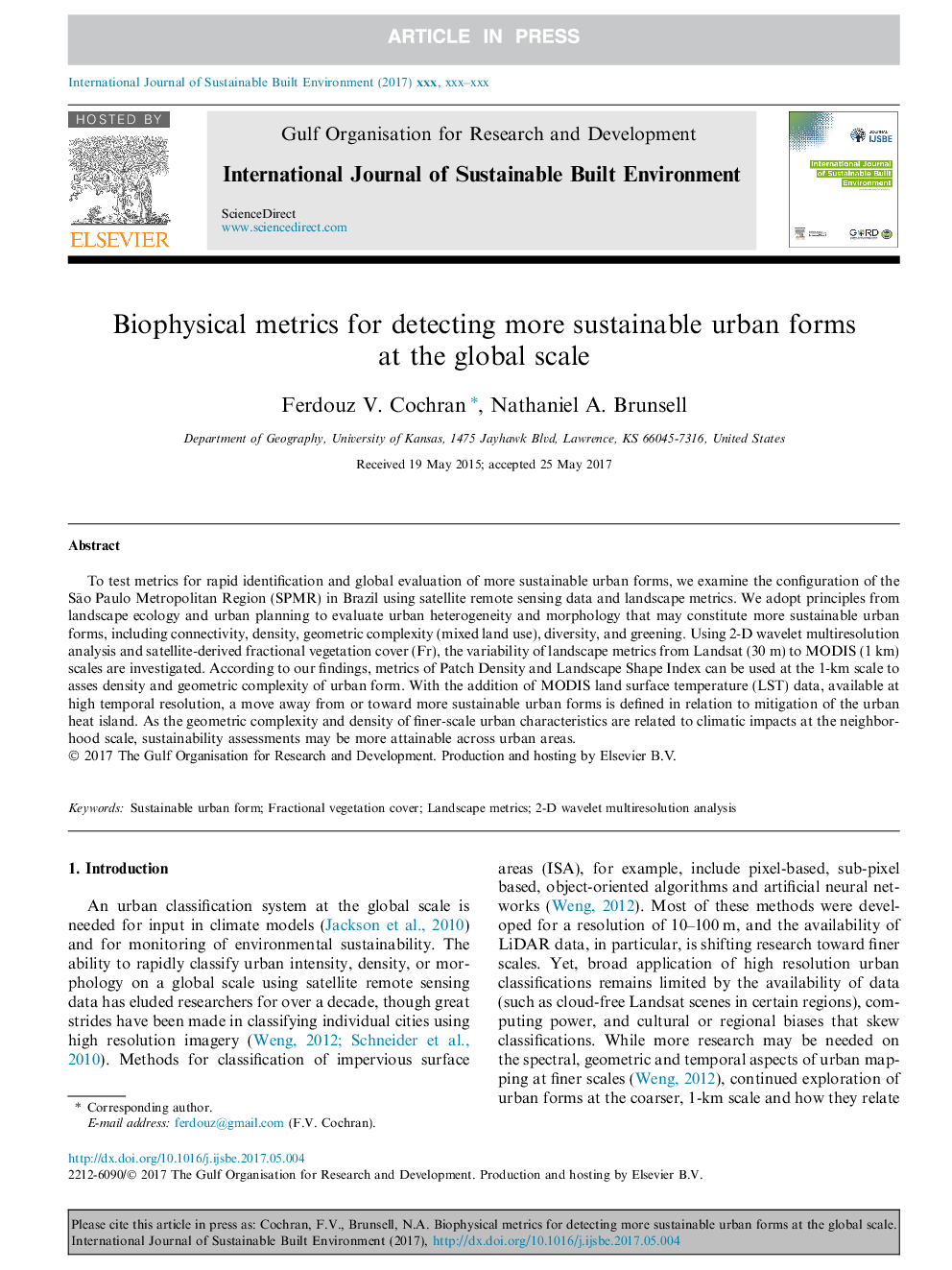| Article ID | Journal | Published Year | Pages | File Type |
|---|---|---|---|---|
| 6659492 | International Journal of Sustainable Built Environment | 2017 | 17 Pages |
Abstract
To test metrics for rapid identification and global evaluation of more sustainable urban forms, we examine the configuration of the São Paulo Metropolitan Region (SPMR) in Brazil using satellite remote sensing data and landscape metrics. We adopt principles from landscape ecology and urban planning to evaluate urban heterogeneity and morphology that may constitute more sustainable urban forms, including connectivity, density, geometric complexity (mixed land use), diversity, and greening. Using 2-D wavelet multiresolution analysis and satellite-derived fractional vegetation cover (Fr), the variability of landscape metrics from Landsat (30 m) to MODIS (1 km) scales are investigated. According to our findings, metrics of Patch Density and Landscape Shape Index can be used at the 1-km scale to asses density and geometric complexity of urban form. With the addition of MODIS land surface temperature (LST) data, available at high temporal resolution, a move away from or toward more sustainable urban forms is defined in relation to mitigation of the urban heat island. As the geometric complexity and density of finer-scale urban characteristics are related to climatic impacts at the neighborhood scale, sustainability assessments may be more attainable across urban areas.
Related Topics
Physical Sciences and Engineering
Chemical Engineering
Chemical Engineering (General)
Authors
Ferdouz V. Cochran, Nathaniel A. Brunsell,
